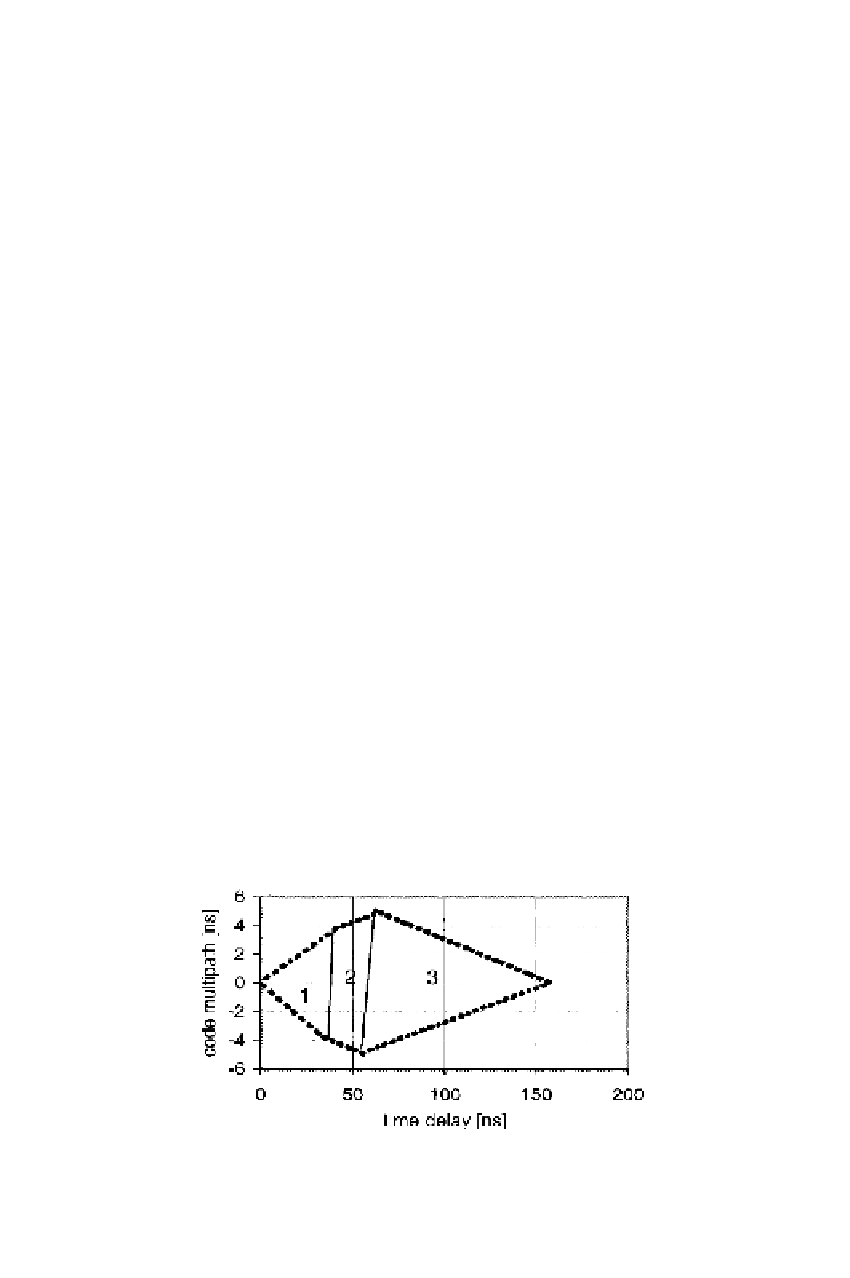Global Positioning System Reference
In-Depth Information
/
1
2
cos
f
1
2
3
4
5
6
7
8
9
10
11
12
13
14
15
16
17
18
19
20
21
22
23
24
25
26
27
28
29
30
31
32
33
34
35
36
37
38
39
40
41
42
43
44
45
∆τ α
∆τ
+
φ
∆τ
+
∆τ
cos
f
∆τ
+
φ
if
<T
−
S
P
1
+
α
T
cos
f
+
∆τ
α
∆τ
+
φ
−
S
+
∆τ
∆τ
+
∆τ
cos
f
if
T
−
S
P
<
<S
P
+
α
∆τ
+
φ
∆τ
P
2
=
T
+
S
−
∆τ
α
cos
f
∆τ
+
φ
S
+
∆τ
∆τ
<T
+
S
+
∆τ
cos
f
∆τ
+
φ
if
P
<
P
2
−
α
∆τ
+
∆τ
(7.15)
0
if
>T
+
S
P
and if
S<T/
2 (narrow sampling) then
1
2
cos
f
∆τ
+
φ
∆τ α
∆τ
+
∆τ
cos
f
if
<S
[24
+
α
∆τ
+
φ
P
1
cos
f
∆τ
+
φ
α
+
∆τ
∆τ
+
∆τ
S
if
S
P
<
<T
−
S
P
∆τ
P
=
T
cos
f
Lin
—
0.8
——
Lon
PgE
−
∆τ
α
∆τ
+
φ
+
S
+
∆τ
∆τ
cos
f
if
T
−
S
P
<
<T
+
S
−
α
∆τ
+
φ
2
∆τ
(7.16)
0
if
>T
+
S
Th
e pseudorange multipath error is
d
P
denotes the time delay of
th
e multipath signal. The expressions are valid for the P-codes and the C/A-code as
lo
ng as the appropriate chipping period
T
is used.
Figure 7.7 shows an example of the envelope for the P1-code multipath range error
∆τ
P
1
oscillations versus time delay
=
c
∆τ
P
, and
∆τ
[24
∆τ
for the wide-sampling case
S>T/
2. As the
phase varies by
the multipath error changes from upper to lower bounds and vice
versa. The distinct regions of Equation (7.15) are readily visible in the figure. Figure
7.8 shows an example of the C/A-code multipath range error for the narrow-sampling
case
S<T/
2. The main difference between the wide and narrow sampling interval is
that the latter has a constant peak at region 2. In fact, shortening the sampling interval
S
has long been recognized as a means to reduce the pseudorange multipath error.
π
Figure 7.7
P1-code pseudorange multipath delay envelope in case of wide sampling.
(T
=
98 ns
,S
=
60 ns
,
α
1
=
0
.
1
,
φ
1
=
0
)












































